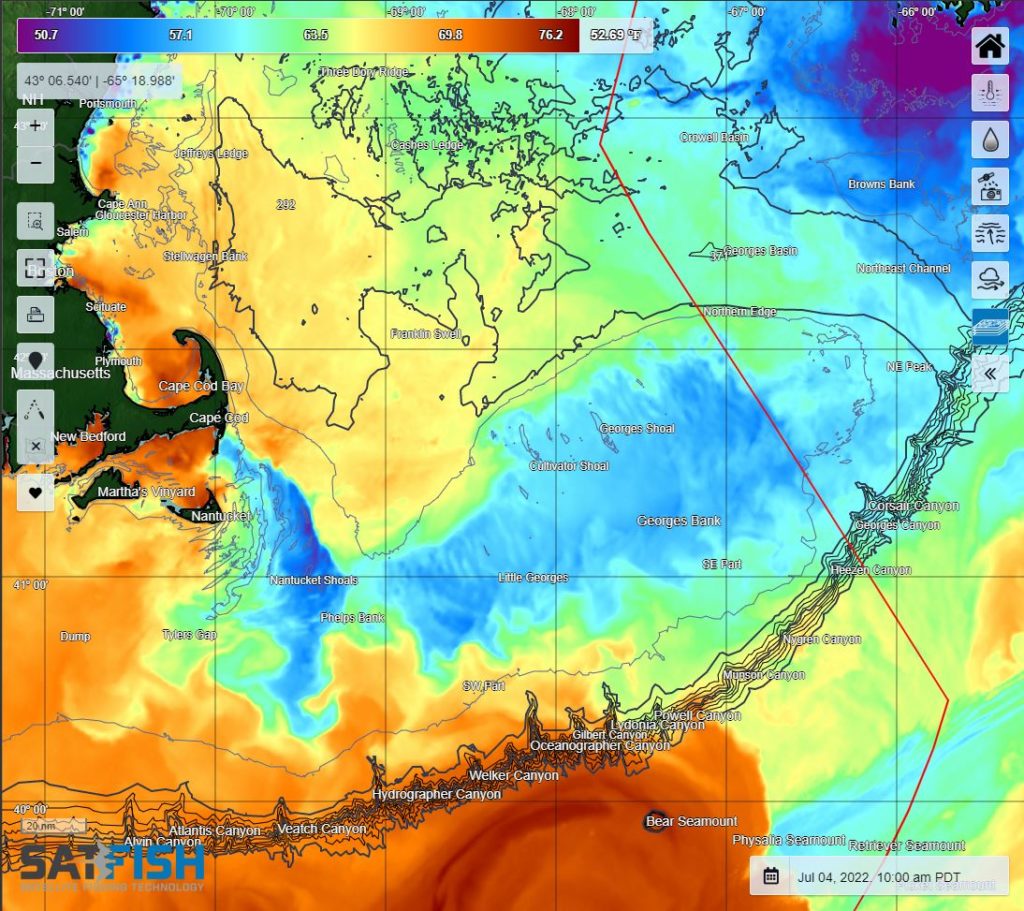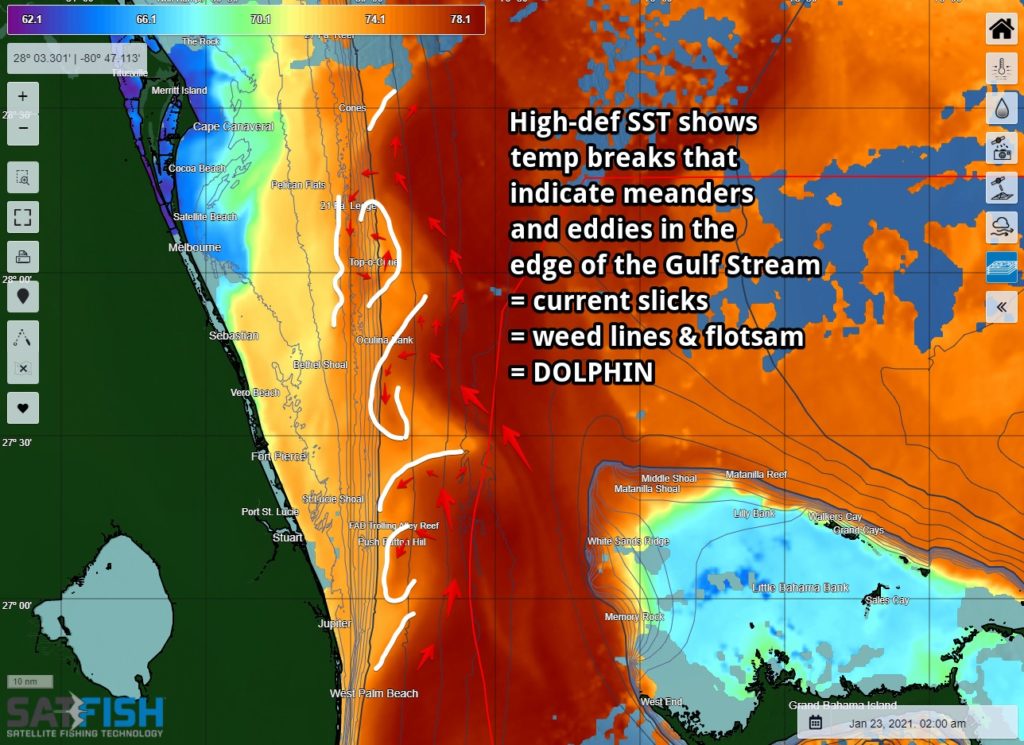
SatFish’s high-def sea surface temperature (SST) charts show where the water temperature is just right for offshore gamefish such as tuna, marlin, mahi mahi (aka dolphin or dorado), and wahoo. These fishing charts are a critical tool to help offshore anglers make the most of their time on the water by allowing us to focus our fishing effort in areas that are more likely to hold our target species.
Sea surface temperature breaks – where the ocean temperature warms up or cools off quickly over just a few miles – also mark oceanic “edges” of water masses and currents that congregate bait fish, kelp, weed lines and sea life, meaning that’s where gamefish are going to gather and feed.
Find the break, find the structure and you’ll find the fish.

These SST charts are made by several satellites orbiting the Earth that measure the infrared heat signature from the water’s surface. Our in-house expert with a PhD in marine science processes all the data for our fishing charts with our own custom filtering and analysis routines, delivering accurate SST images at the highest resolution possible as soon as possible after each satellite passes overhead. In clear-sky conditions, we can generate up to 8-12 SST images daily, giving you near-constant coverage around the clock.
Although these SST charts are great for showing sharp edges and temperature breaks in high-def resolution, the temperature data signal gets “blocked” by clouds and fog, so accurate SST measurements can only be made in clear-sky conditions. SatFish’s advanced cloud-masking routines allow us to show the highest quality data with maximum coverage, making full use of all the clear data pixels. Areas of cloud cover, fog, and other interference yielding inaccurate or low-quality data get filtered out and show up as “blank” areas on the map. For some regions we also offer an unfiltered “raw” SST which shows even more coverage of sharp temperature breaks, such as along the edges of the Gulf Stream.
Fortunately, clouds move! Even if the most recent SST map only has spotty data due to lots of cloud cover over the ocean, chances are skies were clear over your target zone within the last few days. We archive a full week’s worth of SST shots to give you plenty of images to find one with a clear view of ocean temps. You can easily scroll through the latest week’s worth of images with thumbnail previews, allowing you to choose the ones with the best data coverage for your area.

Pro Tip: Scrolling through the map history, and using the “play” button to advance the map images through time automatically, also helps you visualize how temp breaks and water masses are moving from day to day, so you can predict where they’re going to be later in the day or even the next day when you’re out fishing!
During extremely cloudy conditions, anglers can utilize our Cloud Free SST Images and multi-day SST Composites to get an overview of the conditions in the region. These maps blend data from multiple sources and don’t always give the high-def resolution for edges and temp breaks, but they’re still a very useful tool to get a general idea of where water temps are right for your target species.
